1. Religions in Bali - Hinduism, Islam, Christianity, Buddhism
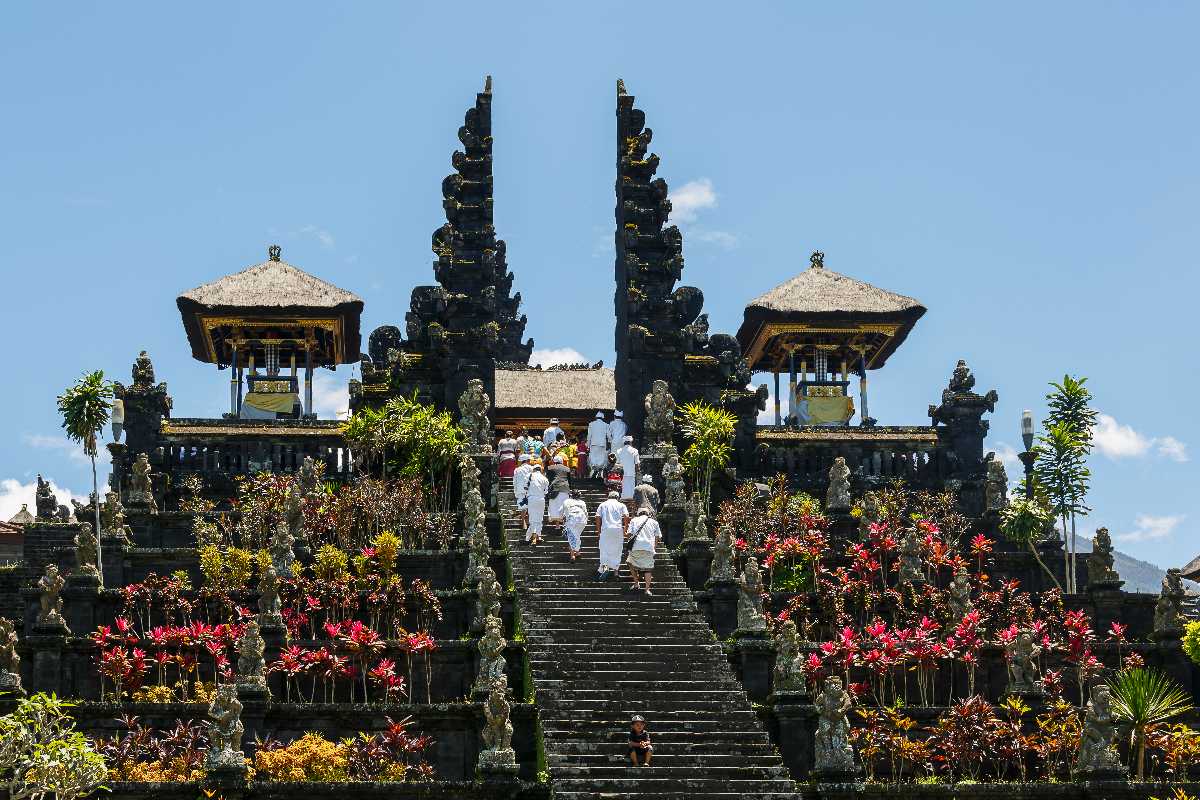
With almost 93% of island comprising Balinese Hindus, Hinduism is the most dominant religion and constitutes the culture of Bali. Islam makes up approximately (13%) of the population, Christianity accounts for around 2.5% and Buddhism comprises less than 0.5% of the Balinese population. Contrary to this statistic in Bali, Islam and Buddhism are two of the more dominant religions in other parts of Indonesia.
Balinese Hinduism - The Main Religion of Bali
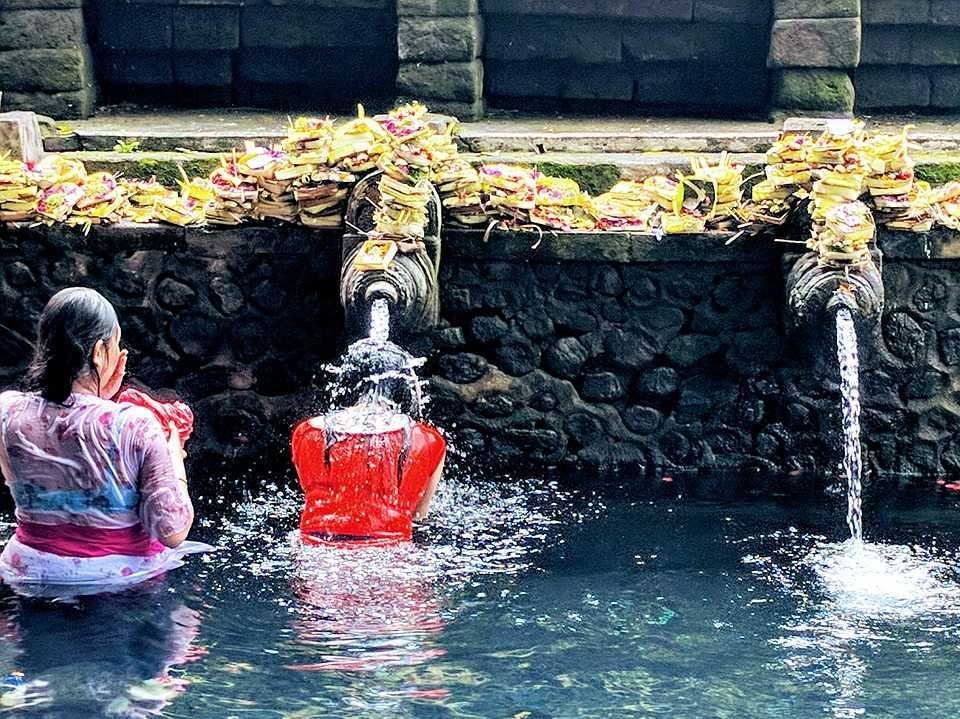
Called Agama Tirta or 'Science of the Holy Water', Balinese Hinduism incorporates interpretations of Chinese, Indian and Javanese beliefs. In Bali, there is a belief that the region is owned by god Sanghyang Widhi who has trusted the local people with it. As a result, the people are deeply religious, making great efforts to appease the gods through processions, offerings, ceremonies and the like.
In the culture of Bali, group worship is preferred. You'll find over 20,000 temples in Bali. Each village is expected to have at least three ? one for the village founder, one for the spirit protecting the village, and one for the dead. On festivals days, temples become quite crowded and grand offerings of flowers and foods arranged in pyramids are made. Smaller offerings are left at village crossroads, where evil spirits are believed to live. On other days, it is still customary to make some kind of offering, typically clumps of rice on banana leafs that are placed in the house and accompanying land. Before important life events, cleansing ceremonies are held to rid the place of demons.
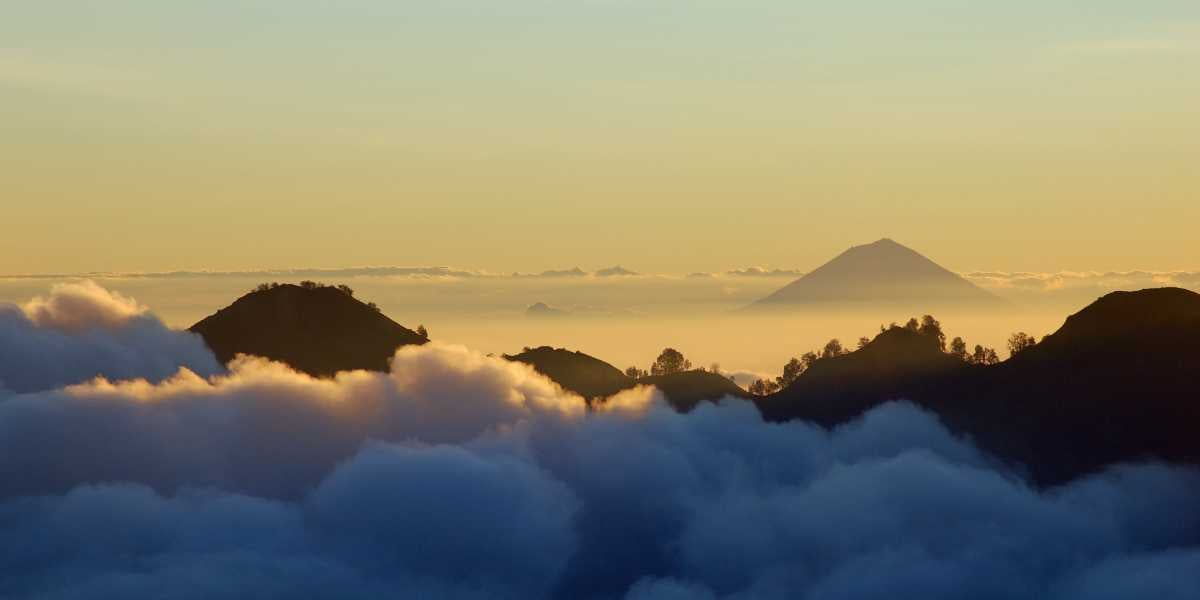
Mount Agung to be the home of the gods in the culture of Bali, and so, buildings and villages traditionally orient towards it. Meanwhile, spirits (evil and benevolent) are believed to live in the sea.
Islam in Bali
Islam is said to have come to Bali, then the Gelgel kingdom, when Muslim individuals arrived here and built the Gelgel Mosque. Today, it is the oldest place of worship for Muslims on the island. Other than this, there are only a handful of mosques in Bali. For a long time, there were very few Muslims in the region. Post-independence, more Muslims came from neighbouring areas like Java, Madura, and Lombok in search of work. Islam remains a minority religion on the island. Many Muslims add Balinese names to their children's Muslim names, such as Ketut Mohammed or Wayan Abdullah, to further blend into the island. There are some Muslim-majority villages in the island such as Palasari, Yeh Sumbul, and Nyuling which constitute the culture of Bali.Christianity in Bali
Bali's first contact with Christianity is said to have come from a letter. King Klungkung, the king of Bali at the beginning of the 17th century, is believed to have sent a letter (written on palm leaf) to the Vatican, inviting priests his kingdom. Missionaries did arrive, but their sermons were not successful in gathering supporters. Today, evangelism continues to survive in the culture of Bali, through efforts such as the Bali Gospel Festival held in Denpasar, where there are prayers through sermons and Christian songs.2. Dances of Bali That Highlight the Culture of Bali
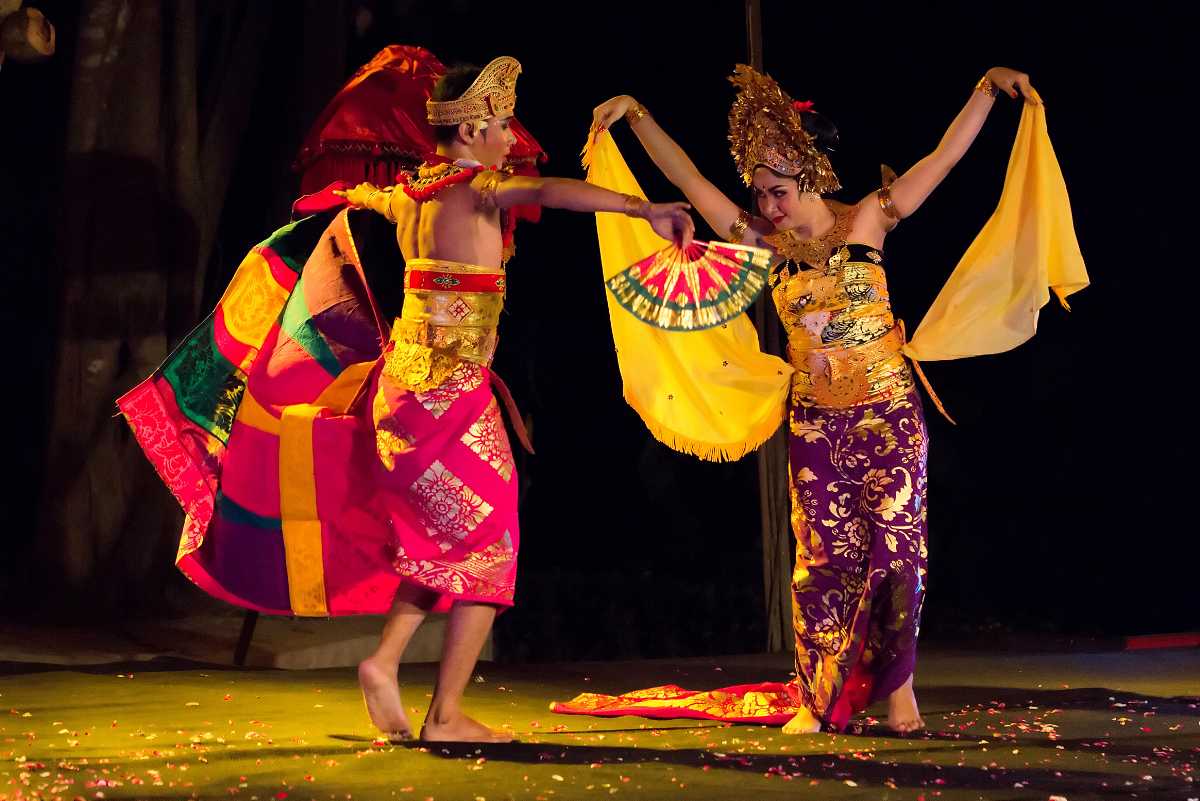
In 2015, UNESCO recognized three genres of Balinese dance: sacred dances ("wali"), semi-sacred dances ("bebali") and entertainment dances ("balih-balihan"). Most Balinese dancers are trained from a young age and are highly respected by local communities. Their dances are accompanied by an orchestra of bamboo and wooden instruments called gamelan which provides rhythm to their movements. Most dances are highlights to the culture of Bali and involve intricate hand movements called mudras and facial expressions. Balinese dances typically play out stories from Hindu epics such as the Ramayana, Mahabharata, and Bhagavad Gita.
Sacred Dance (Wali)
These dances are commonly performed at religious functions in Balinese culture as a way to welcome and entertain the gods. Dating back to the 8th century, sacred dances are only allowed to be performed in Balinese temples. During the performance, it is believed that the dancers are possessed by the Gods.Semi-sacred Dance (Bebali)
Though these dances can be used for rituals, they can also be performed for entertainment. Most of these cultural Balinese dances have a storyline and characters, making the performance rich with symbolism. The dance dates back to the 14th century. Some semi-sacred dances include topeng and gambuh.Entertainment Dance (Balih-balihan)
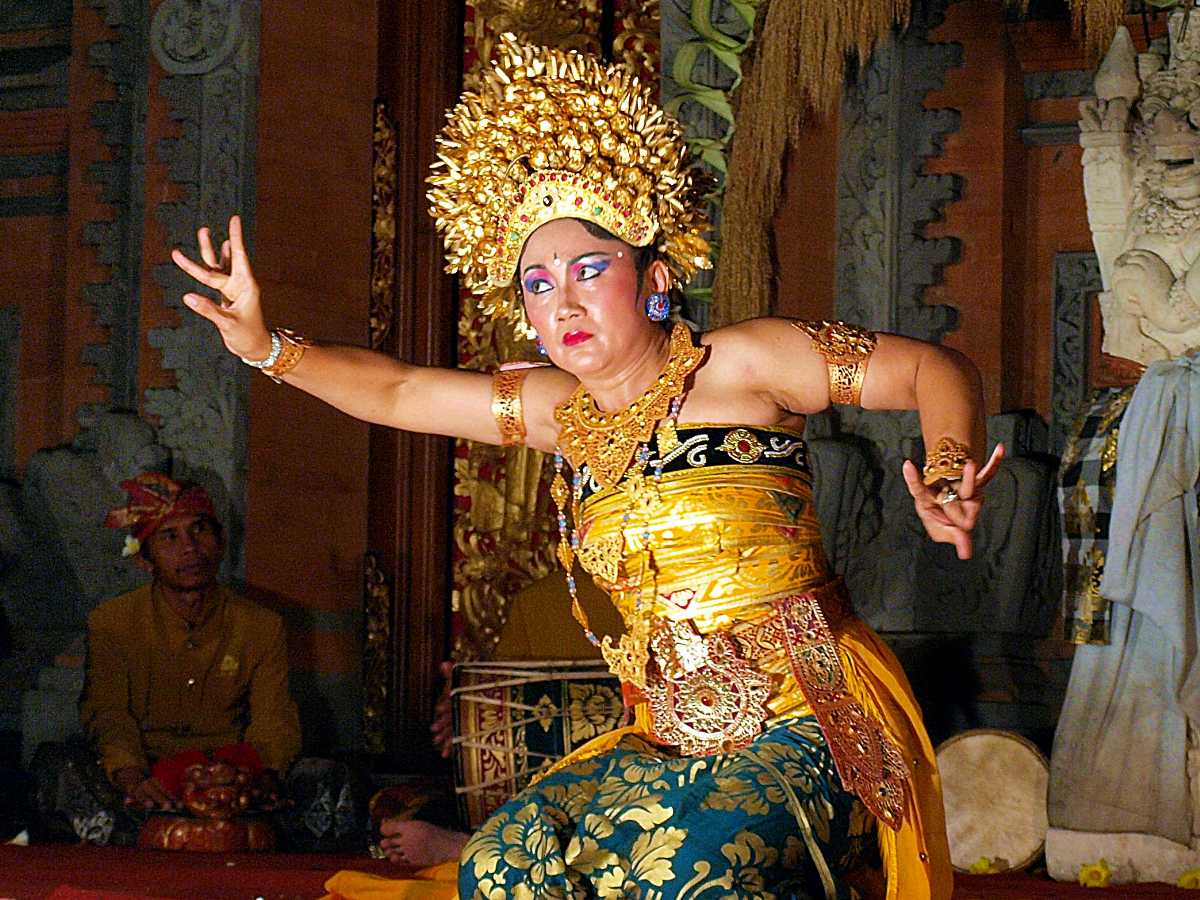
The Balih-Bailhan dances are most commonly seen by tourists of Bali. They are often organized by hotels or tour companies multiple times a week, sometimes more during peak season and as a result, dancers find these forms profitable. The dances embody the culture of Bali by displaying its traditions in full splendour.
Barong is performed by two men sharing a large costume, to depict the king of the spirits from Balinese mythology. They are joined by other dancers depicting other animals and humans. The highlight of this dance is when dancers stab themselves with an asymmetrical Balinese dagger called keris, remaining unharmed. Legong is performed by women. Because of its sophisticated movements and facial expressions, it requires training from a young age. Its origins can be traced back to entertainment for the royal courts. Kecak is believed to be a newer art form, created in the 1930's. It is an adaptation of the Ramayana. In this dance, over 100 male dancers perform shirtless, often accompanied by fire. Instead of using a traditional gamelan, kecak dancers play their own music.
3. Theatre in Bali
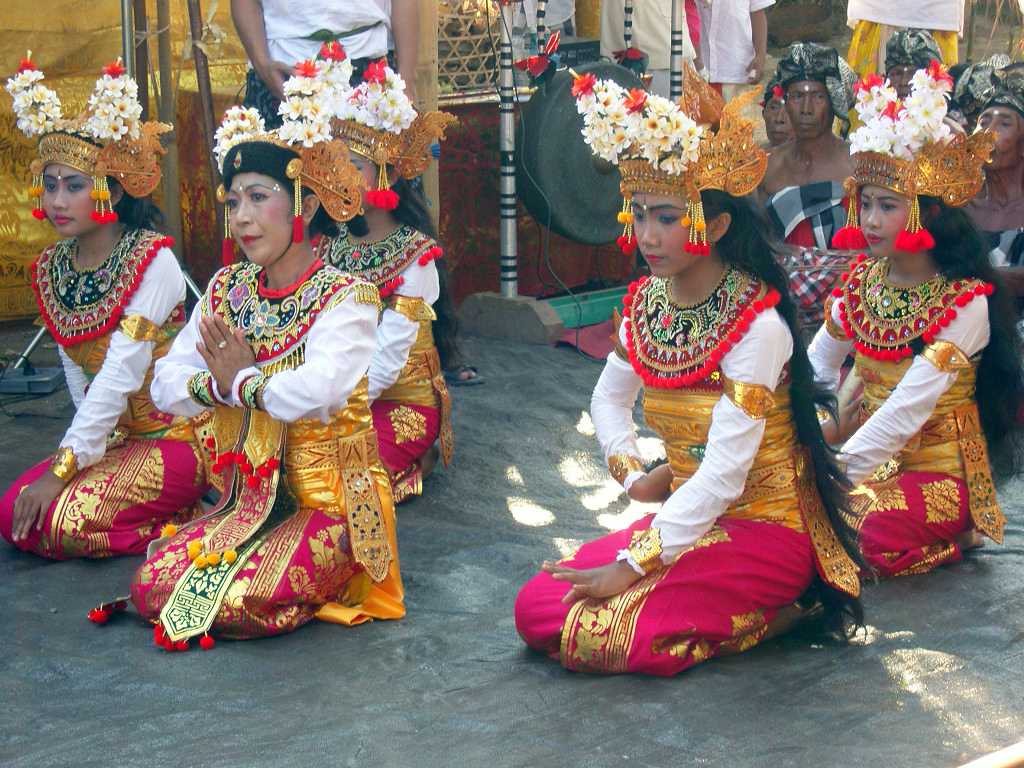
Dance-Dramas (Source)
Because of the narrative nature of dance in Bali, it is closely linked to the region's theatre traditions. They are dubbed 'dance-dramas'. There's often an overlap between classifications of certain traditions as merely dance or theatre, such as barong, gambuh and topeng discussed before. Drama in Bali is performed as a part of the culture of Bali at most social gatherings, from birthdays and weddings to religious rituals and cremations. They primarily share stories from the Mahabharata and Ramayana, but Bali has seen western theatre traditions. In 1960, Willibrodus Rendra's theatre company arrived on the island and displayed adaptations of the works of Shakespeare, Beckett, and Brecht amongst others.
Wayang Kulit - Puppet Theatre
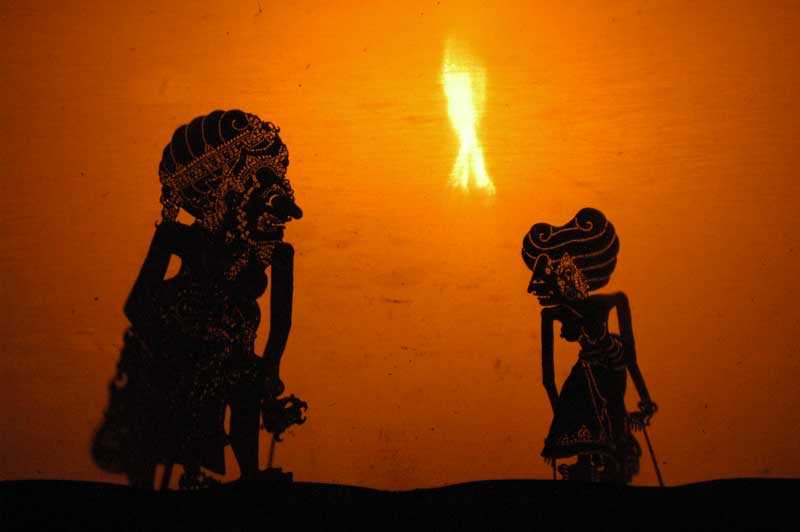
Wayang, a puppet theatre art form in Indonesia, is one of the Masterpieces of Oral and Intangible
Heritage of Humanity by UNESCO (Source)
Derived from the word 'wayang' meaning puppet, wayang kulit is a form of puppet theatre that brings the Mahabharata to life. It originated in Java, but has become very popular in the culture of Bali. The puppets are projected onto a screen made of linen and the shadow artist (called dalang or narrator) manipulates them between the screen and the light. These plays usually last a few hours and are contextualised stories of the Mahabharata that are made relevant to contemporary issues faced by the community, nation or globe. In 2003, wayang kulit was designated as one of the Masterpieces of the Oral and Intangible Heritage of Humanity by UNESCO.
4. Music of Bali - Gamelan; An Intrinsic Part of Culture in Bali
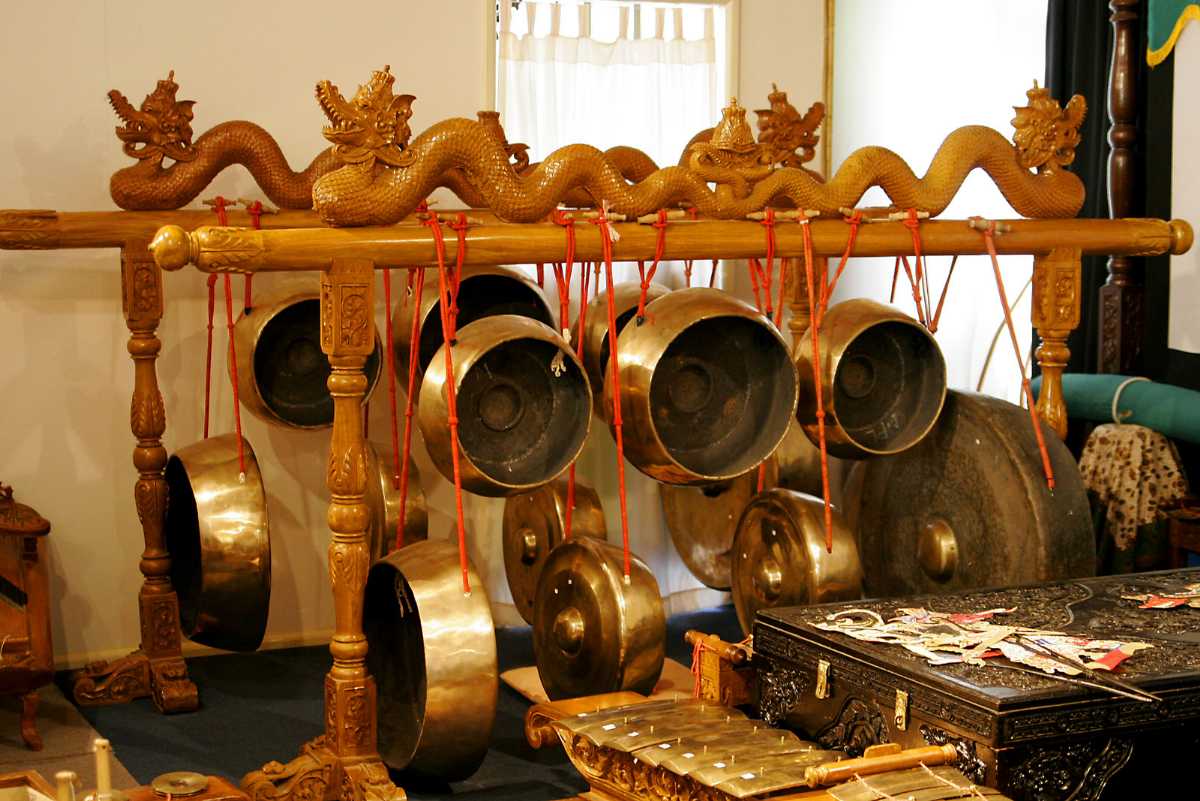
The traditional music of Bali is an ensemble called the gamelan. It derives its name from the Javanese word 'gamel' meaning mallet used to strike instruments. Although it primarily includes percussive instruments, the gamelan involves other instruments such as metallophones, xylophones, bamboo flutes, gongs, and drums called kenghang. Men and women typically perform in separate gamelan groups.
According to local history, the gamelan was created by Sang Hyang Guru, a Javanese god who ruled the Indonesian kingdom. It is believed that he created the gong as a kind of signal to summon the gods, and after creating two other smaller gongs in accompaniment, the gamelan was formed. There are many kinds of gamelan in Indonesia that can be distinguished by the instruments used, style, tunings and voice.
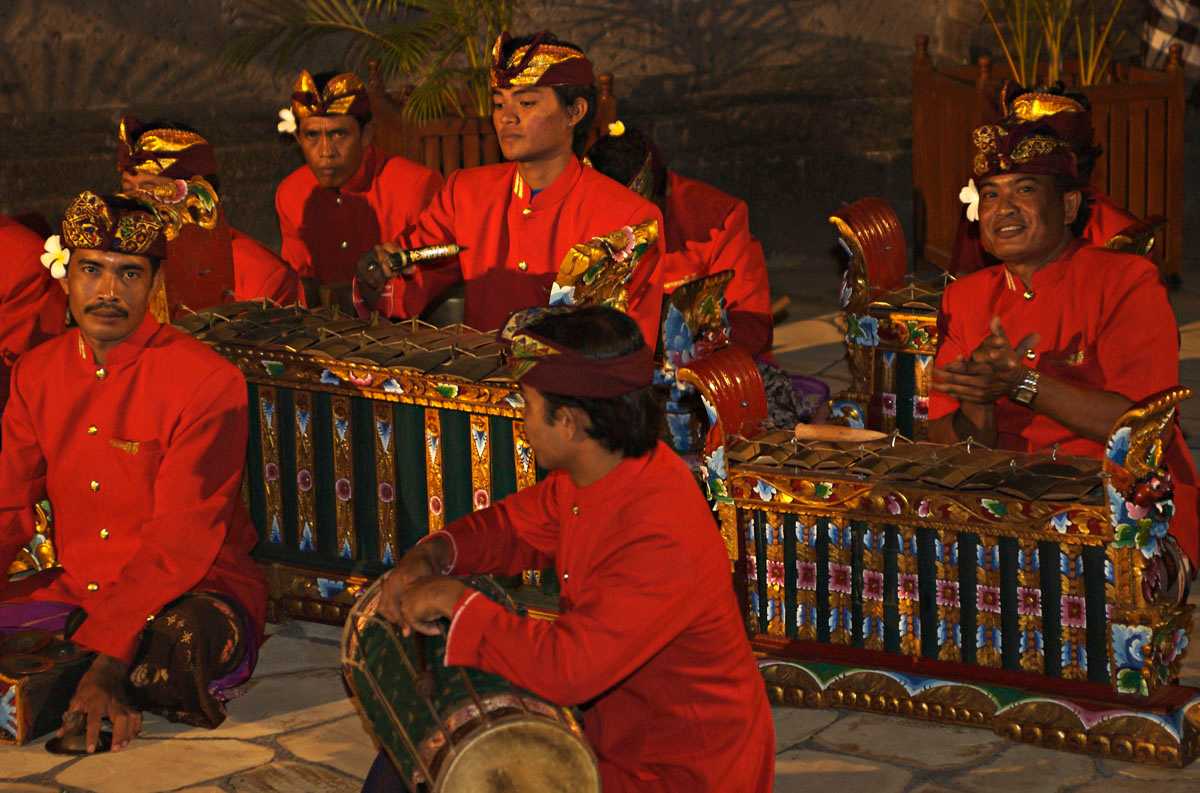
The Balinese gamelan differs from the slow, meditative Javanese gamelan in its quick beats and tempo. It is performed as an accompaniment to Balinese dances, wayang puppet performances, and religious ceremonies. The instruments are stored in an open space called a 'bale' that has a roof on top while it is open on all sides, and the instruments are made of bronze and bamboo. Bali has its own varieties of gamelan such as gamelan jegog, gamelan selunding, gamelan gambang and gamelan kebyar.
5. Art of Bali
_20181121180333.jpg)
The art of Bali has Hindu-Javanese origins. It is highly-developed and integrates artistic expression into objects of daily use, instead of using them as mere decorations. From the 16th to the 20th century, the village of Kamasan in east Bali was the hub of art in the region. With Dutch colonisation and other western influence making its way to the island, Balinese art began to absorb other artistic ideologies. Today, Ubud and Batuan are famous for Balinese paintings while Mas is known for its woodcarving. Celuk is popular for its metalwork and Batubulan is renowned for excellent stone carvings.
Balinese Painting
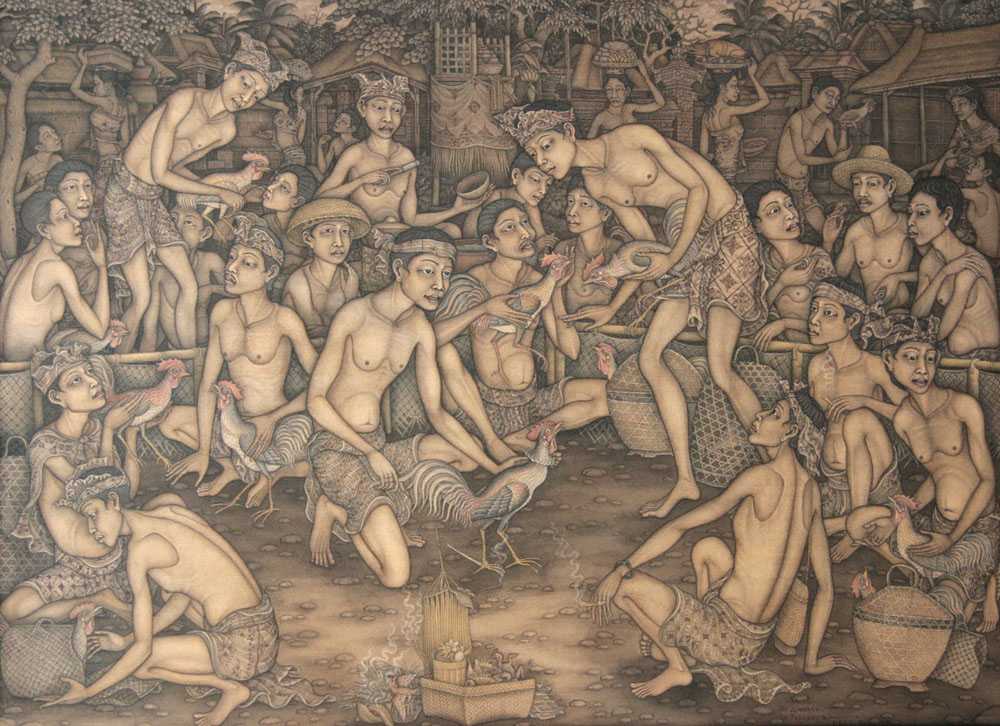
Before the 1920's, paintings emerging from Bali were fairly two-dimensional, drawn onto cloth or bark paper with naturally-made dyes. When western artists began to arrive on the island, experiments into painting began. Ubud was the art centre and artists from surrounding villages like Tebasaya and Peliatan would arrive here. Their paintings depict both religious stories and daily life. The artists here received patronage by royal houses and temples. South of Ubud, the village of Batuan prospered without any western influences. As a result, their paintings are fairly dark, using gradations of black and white ink to tell stories of the night and nocturnal elements. In recent years, their scope has increased and you can find tourists being depicting in their paintings.
Wood Carvings in Bali
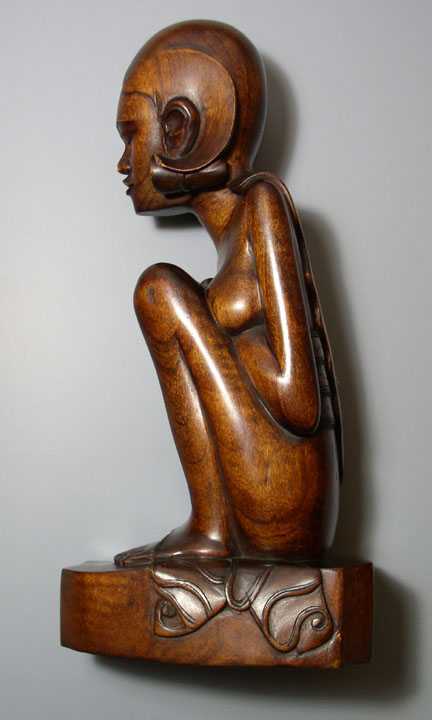
Wood carving has been an important tradition in Balinese art and culture, and it underwent a transformation in the 1930's post colonisation. Traditionally, woods such as jackfruit, teak, and Baliwood were used but in recent years, wood is important from Java due to a lack of resources and accessibility. While some wood carvings can be pieces made by individual artists, most carvings are a group effort, made by several people who sit together and work on their own sections. The weather of the island is ideal as the wood dries slowly while artists work on it. After carving and sanding has been completed, paint and lacquer is applied. Bali's wood carvings have been displayed in museums like Nusantara Museum in the Netherlands.
Stone Carving in Bali
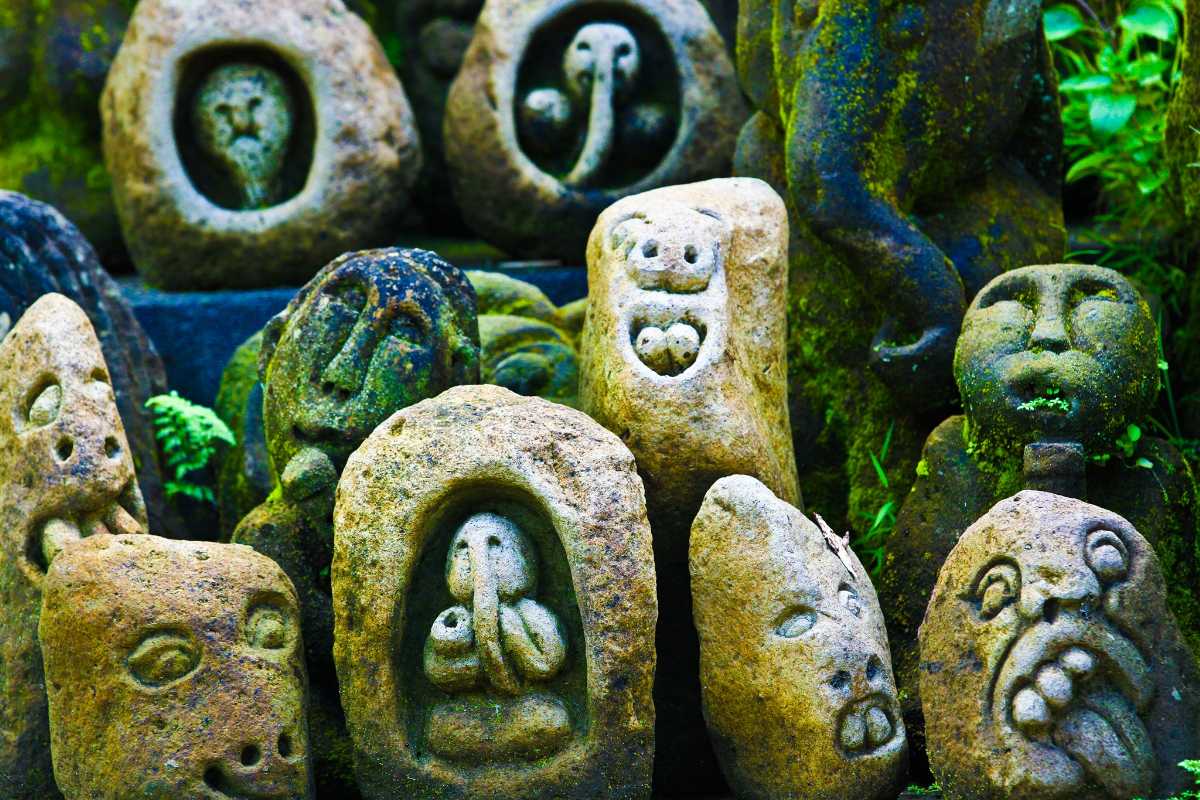
This art form is found all over Bali, from Batubulan in Ubud to Kepal in the left. The large stone carvings are generally reserved for temples and palaces to act as gateways. In Balinese culture, they are meant to represent divisions between the 'inner' and 'outer' world. In fact, almost all locations in Bali from offices to restaurants and homes have some stone sculpture at the door as 'security'. It is also believed that these stone carvings would scare guests from misbehaving while visiting someone's home. The sandstone used for carving, called 'paras', it said to be light as pumice. Typically, black volcanic stone is used for temple and statues while a lighter stone like limestone is carved for other purposes. Due to Bali's moist weather conditions, the carvings wear down easily and need to be frequently replaced.
6. Food in Bali
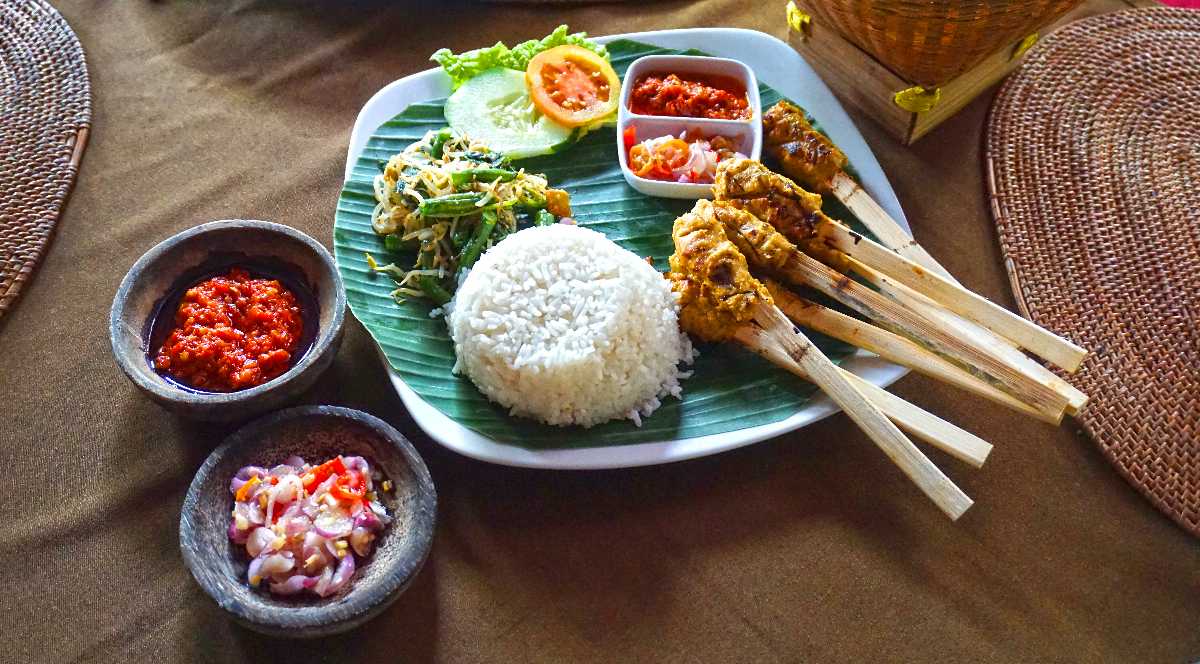
Being Indonesian with influences of Chinese and Indian cuisines, the food in Bali has a unique identity, As with much of Southeast Asia, rice is a staple here. With Bali's sophisticated irrigation systems, this is quite understandable. This is accompanied by vegetables, meat and seafood. Although chicken, pork, seafood and mutton are consumed in Bali, beef is rarely or never consumed as per Hindu beliefs. The dishes are cooked in rich spices such as ginger, lime, nutmeg, clove, coriander, and shallots.
Some of the most common dishes in Bali are: babi guling (roast pig), nasi campur (mixed rice), lawar (meat, vegetables and rice), sambal (hot sauce made with chili, shrimp paste, finger, and vinegar) with rice, rawon babi (pork stew), bebek betutu (crispy duck) and sayur urub (mixed salad). For drinks, Bali is known for cincau (black jelly and ice), kelapa muda (coconut water), sari temulawak (ginger soda) and kopi bali (coffee).. In terms of alcohol drinks, you can find tuk (palm toddy), brem (red rice wine), arak (white rice wine).
7. Traditional Dress in Bali
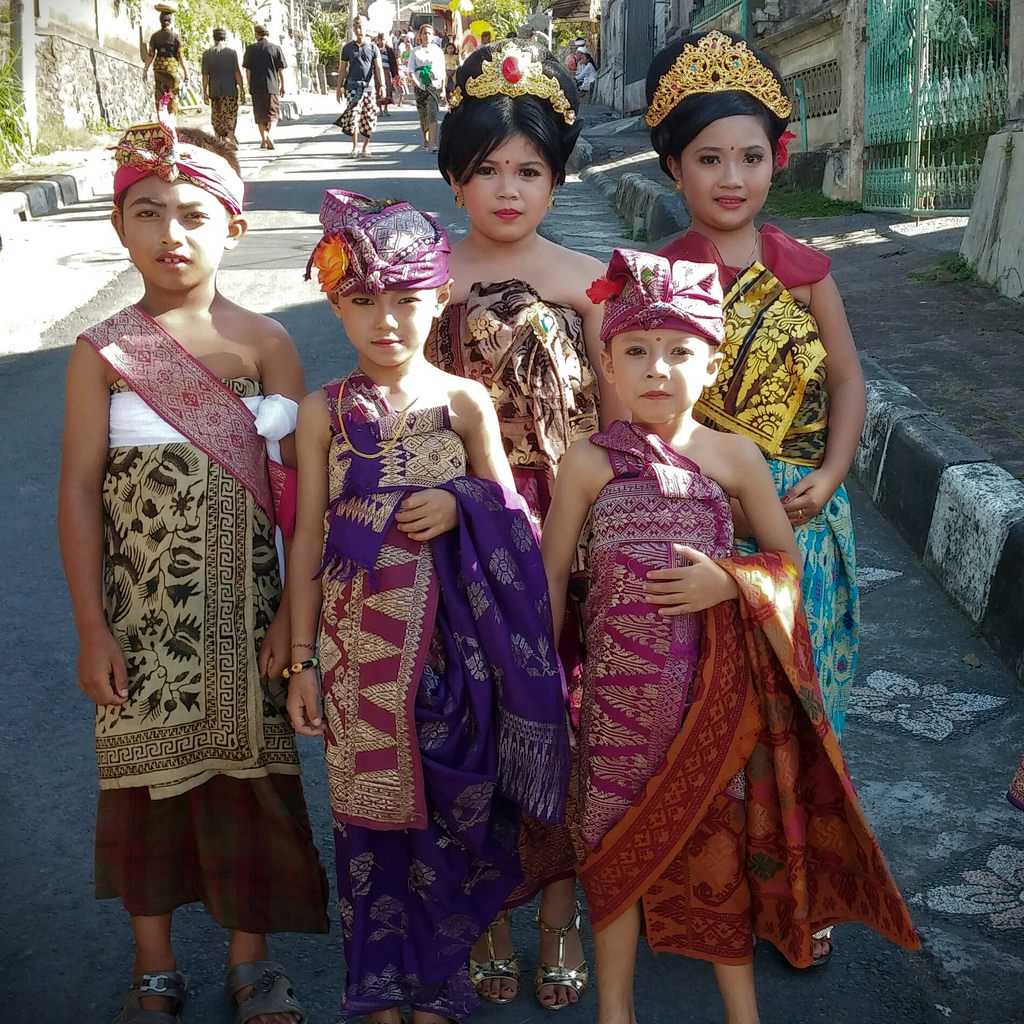
The traditional dress in Bali for women is primarily made up of four items: kamen (a type of sarong), kebaya (a blouse), sabuk (a type of sash-belt) and selendang (a decorative band). The kamen is a long cloth that is wrapped around the waist, further secured by the sabuk that is wrapped around the torso between the hips and the solar plexus. Then, the torso is covered the generally loose-fitting kebaya. This tapers at the waist then flares out to create an attractive silhouette. Finally, the outfit is finished with the decorative band selendang. Interestingly, Bali women did not traditionally wear kebayas. It was said to have been brought to the region by Dutch colonisers who made the women cover their arms and shoulders. Prior to this, women going about their day topless (or baring most of their chest) were fairly common and it was immodest to display thighs. The decorative sash selendang is similar to a corset in the way that it achieves a desired slender look by flattening and binding a woman's body.
Meanwhile, men follow a similar outfit. They wear floor or knee length sarongs called kain, typically in dark colours like black or brown. Then, a sash is tied around their waist, often holding Bali's special ceremonial dagger, keris. They complete their outfit with a shirt, usually plain in color with no patterns. Some men are known to wear the traditional cloth headdress called udeng.
Literature in Bali
Bali has historically had a rich oral and written literature culture. Their literature is generally divided into the purwa (traditional) period and anyar (modern) period. Over the years, there have been efforts to preserve and promote Balinese literature. In 1967, the Cultural Office held a short story writing competition that created an influx of short stories, a feat that had not taken place since the 1900s. Bali's first modern poems were published in 1968. In 1992, the Local Resolution 3/1992 was enacted by the Balinese government. Among a host of other things, this resolution resulted in the creation of the Board of Balinese Language and Literature Development. Since then, there have been consistent efforts in the field of Balinese literature. Despite this, it continues to lag behind Indonesia's national literature and Javanese literature._20181121184335.jpg)
Of course, all of this is but a glimpse into the rich culture of Bali! Once you make the plan to visit this beautiful island, you'll get the opportunity to interact with the homely locals and watch traditions come alive in front of you. Don't forget: travelling is never a bad investment, and understanding other cultures only enriches your own understanding of the world. So what are you waiting for?
